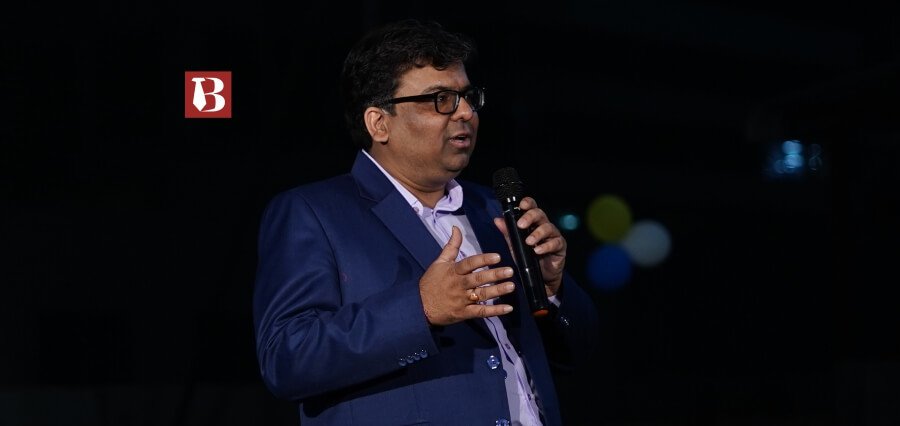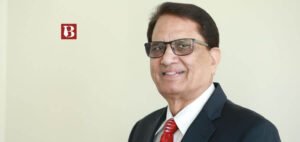As we welcomed Rupesh Garg, the CEO and Chief Architect of Frugal Testing, we all had some specific questions at first, nagging our (the team’s) minds.
Rupesh came, shook hands with all of us and then sat at a chair. I asked, “Sir, please don’t mind me, but we want to know from you at the onset that
“What is software testing, and why is it so crucial?”
Rupesh smiled vibrantly, “That’s an excellent question, which often people are hesitant to ask.” He leaned back in his chair, a thoughtful expression on his face. “Software testing,” he began, “it’s not just about finding bugs. It’s much more than that. Think of it as a crucial bridge, spanning several key gaps in the software development lifecycle. It’s what ensures we deliver high-quality, reliable, and user-friendly products.”
He paused, then elaborated, “One significant gap is between requirements and implementation. We design software to meet specific needs, right? But sometimes, the actual coding can stray from those initial plans. Maybe there’s a misunderstanding, a coding error, or the needs themselves change during development. This can lead to software that doesn’t actually do what it’s supposed to or what the user expects. Testing comes in here, validating that the software functions as designed and aligns with those original requirements. We verify every feature, making sure it performs its intended task and that the whole software package delivers the expected value. This process helps us catch those mismatches early on and fix them.”
Rupesh shifted his focus. “Another gap, equally important, is between user expectations and reality. Users have ideas about how software should work, how easy it should be to use, and how well it should perform. However, these expectations aren’t always explicitly stated, and the development team might not fully grasp them. The result? Software that works but isn’t a good experience. User-focused testing, like usability testing and user acceptance testing, tackles this. We put the software in front of real users and see how intuitive, efficient, and enjoyable it is. Their feedback is gold; it pinpoints where the software falls short of their expectations, allowing for improvements before the official release.”
He then addressed the often-debated topic of cost. “There’s a quality and cost gap too. Everyone wants high-quality software, but quality takes time and money. Finding and fixing bugs late in the process is way more expensive than catching them early. So, the challenge is balancing quality with time and budget. Testing is the answer. It helps us find those defects early when they are easier and cheaper to fix. By testing throughout the lifecycle, we prevent those little bugs from becoming big, expensive problems later. It’s a proactive approach; we build quality in from the start, which actually reduces the overall cost of development.”
Rupesh continued, “Then there’s the development and operations gap. Traditionally, these teams have been siloed. Communication breaks down; integration is a nightmare. The software might work perfectly in the development environment but then fall apart when it’s deployed to the real world. Continuous testing, often part of a DevOps approach, bridges this gap. Testing becomes an ongoing process. We test in environments that mirror the production environment, allowing us to catch deployment issues early. This encourages collaboration between development and operations, making deployments smoother and more reliable.”
Finally, he spoke about the connection to the business side. “There’s a technical and business gap as well. Software development is technical, but it’s ultimately about serving business needs. Connecting the technical aspects to the business goals can be tough. Testing brings technical and business stakeholders together. Testers work with product owners and business analysts, understanding the business requirements and making sure the software delivers. This translates technical jargon into business value and ensures the software achieves the desired outcomes.”
Rupesh concluded, “So, you see, software testing is vital. It’s not just about finding bugs. It’s about bridging gaps, ensuring quality, understanding user needs, and ultimately, delivering software that works, is user-friendly, and meets the business goals. It’s about collaboration and proactive problem-solving throughout the entire software development process.”
Democratizing Access to Top-Tier Tech Resources
We all nodded, with that utmost satisfaction on our faces, as we had completely understood it. Rupesh is not just a software testing expert but a stalwart in the industry. He embarked on his journey in the software testing industry with a clear vision and a set of motivations driven by recognized gaps in the market. Inspired by industry titans such as Elon Musk, Narayana Murthy, and Azim Premji, Rupesh aimed to meld innovation with structured growth and stringent ethical standards. His initial vision was to establish a company that could offer affordable, high-quality testing solutions, thereby democratizing access to top-tier tech resources and fostering a more equitable tech landscape.
An Empowering Style
Rupesh’s leadership style is deeply rooted in collaboration and empowerment. He fosters a work environment where team members are encouraged to contribute ideas and take initiative, which not only propels innovation but also builds a sense of ownership and camaraderie among the team. This approach has been pivotal in creating a culture where continuous learning and mutual respect are the norms and where every challenge is met with a unified strategy.
Mentorship plays a central role in both personal development and business success, a principle that Rupesh passionately supports. Through his engagements as a mentor and speaker, he has influenced countless tech professionals, underscoring the value of sharing knowledge and experiences to foster the next generation of industry leaders. His mentorship extends beyond mere advice, focusing on practical skill development that prepares mentees for real-world challenges.
Rupesh cultivates a culture of continuous learning within Frugal Testing, encouraging team members to pursue ongoing education and professional development. This culture ensures that the organization remains adaptable and informed, ready to tackle new challenges with the latest industry knowledge and techniques.
The Success Equilibrium
For Rupesh, success is intricately linked to the ability to meet client expectations through innovative and cost-effective solutions. His strategic vision involves not only staying ahead of technological trends but also ensuring these advancements are effectively integrated into services that enhance client operations without prohibitive costs. This client-centred approach drives all strategic decisions, ensuring the company continuously evolves to meet the dynamic needs of the market.
Rupesh expertly balances the drive for innovation with the need for customer satisfaction by closely aligning new technologies with customer needs. His strategy involves rigorous testing and client feedback loops to ensure that every innovation directly contributes to improved client outcomes. This approach not only propels the company’s technological prowess but also builds strong client relationships based on trust and proven results.
Turning a Challenge into an Innovative Opportunity
One notable initiative under Rupesh’s leadership was the strategic pivot during the COVID-19 pandemic from a SaaS product-centric approach to a more service-oriented model. This shift not only helped sustain business during turbulent times but also aligned better with evolving market demands, showcasing his ability to adapt and lead through change.
The pandemic brought unprecedented challenges, which Rupesh met with resilience, adaptability, and strategic acumen. Recognizing the need for swift action, he transitioned his team to a remote work model, implementing digital collaboration tools to maintain productivity and cohesion. By enhancing communication strategies and fostering a culture of transparency and support, he ensured his team remained engaged and motivated despite the uncertainties. His proactive approach not only safeguarded employee well-being but also sustained business operations, allowing the company to navigate disruptions effectively and emerge stronger in a rapidly evolving landscape.
Maintaining Personal-Professional Rhythm
Rupesh understands the importance of maintaining a healthy work-life balance, especially in a demanding leadership role. He employs several strategies to ensure he remains effective both in his professional and personal life. These include setting clear boundaries between work and home life, delegating tasks effectively to trust team members, and prioritizing tasks that maximize productivity without compromising well-being. Rupesh also emphasizes the importance of downtime and hobbies that help recharge his mental and emotional batteries. By integrating these practices, he ensures that he can sustain his performance over the long term and be present for both his team at work and his family at home.
His Message to the Aspirants
With his wealth of experience, Rupesh counsels those entering the industry to embrace a holistic approach to professional development. First, he emphasizes the importance of foundational knowledge combined with a proactive stance towards learning new technologies and methodologies. This approach ensures that professionals not only stay relevant but also can foresee and adapt to industry changes. Furthermore, Rupesh highlights the importance of networking and building relationships within the industry, as these can provide both mentorship opportunities and potential career advancements. Finally, he advises maintaining high ethical standards and integrity, which serve as the cornerstone of long-lasting professional relationships and personal reputation in the industry.
An Advance Tech-Integrated Future
Rupesh envisions a significant emphasis on incorporating AI and cloud technologies into the company’s offerings. By staying ahead of emerging trends and continuously upgrading technological capabilities, he plans to keep Frugal Testing at the forefront of the industry, ensuring it remains competitive and relevant in a rapidly evolving digital landscape.
Thus, looking ahead, his vision for Frugal Testing and the broader industry involves a deep commitment to innovation and quality. He aims to expand the company’s reach, particularly targeting growth in North America, where he sees significant opportunities for impact. By integrating cutting-edge technologies like AI and machine learning, Rupesh plans to enhance the company’s testing services, making them more efficient, cost-effective, and tailored to client needs. This technology-driven approach is expected to not only elevate Frugal Testing’s market position but also set new standards for the industry. Rupesh also envisions a shift towards more sustainable practices within the industry, anticipating and leading in the adoption of green technologies and methodologies that reduce the environmental impact of tech development. “Ultimately, my goal is to shape the future of software testing by championing innovation, quality, and sustainability, establishing Frugal Testing as a global leader in the field,” he concludes.
Read Also : Legacy Reinvented: Yash Vardhan Bhandari’s Vision for a Smarter Industrial Future




